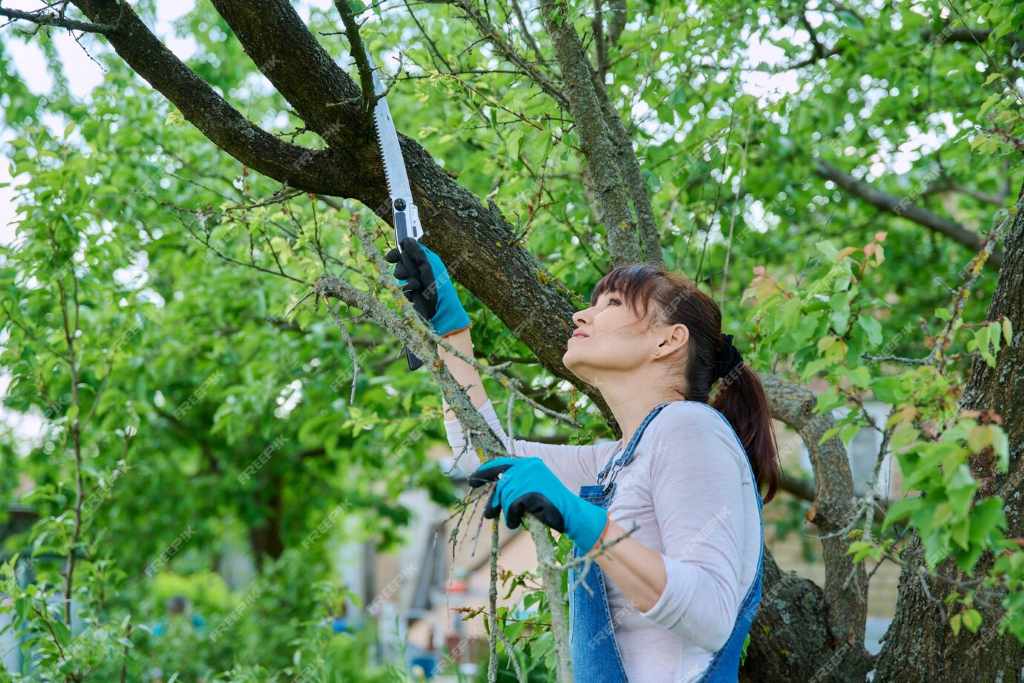The western United States is home to the sturdy Palo Verde tree, a symbol of nature’s ability to persevere under difficult circumstances. If one of these unique trees happens to be in your house, you may be wondering, “How to trim a Palo Verde tree?” This comprehensive guide will walk you through the procedure and provide helpful comments and ideas that you can put into practice to make sure your Palo Verde maintains its most appealing appearance and feel.
Understanding What a Palo Verde Tree is and How to Trim
Before we start hacking down the Palo Verde trees, let’s first take some time to understand these trees. The tree in question is a unique illustration of a desert adaptation, easily identified by its bright yellow blooms and unusually green bark. The tiny leaves and photosynthetically active green bark of the palo verde plant allow it to flourish in low-water settings.
Steps: How to Trim a Palo Verde Tree
A Palo Verde tree’s lifetime and general health are impacted by pruning, which is also done for aesthetic purposes. Trees that are regularly trimmed have better ventilation, less diseased or dead branches removed, and balanced growth. It also makes the tree more resistant to adverse weather, better equipping it to face the difficulties of thriving in arid areas.
1. Assemble the required tools
Assemble all of the tools required for the task first. To ensure adequate protection, a set of pruning shears, loppers, and a pruning saw are necessary, as well as safety glasses and gloves. You may be sure that the trimming procedure will go quickly and easily if you have the right tools.
2. Begin by cutting off any dead or unhealthy branches.
Examine the branches of your Palo Verde tree to make sure there are no dead or diseased sections there. These are excellent candidates for removal since they might negatively impact the health of the tree as a whole.
3. Cut off any branches
Cut off any branches that are crossing or rubbing against the tree’s main stem by using your pruning shears to trim these branches close to the trunk. Examining the tree for any branches that are rubbing against or crossing one another is the next step. As a result, the tree can get sores, which would increase its vulnerability to illnesses and pests. Using your pruning shears or loppers, you may clip off these branches. Just be careful to cut cleanly to prevent any unnecessary damage.
4. Trim Any Neighboring Branches Low
Branches that are hanging low have the potential to obstruct traffic or endanger public safety. A pruning saw should be used to clip these branches, paying great attention to the areas closest to the main stem. This not only enhances the appearance of the tree but also increases the safety and visibility of your property for visitors.
5. Preserve an Equitable and Harmonious Canopy
For the Palo Verde tree to remain healthy and attractive, a well-balanced canopy is important. Every now and again, think about stepping back a few steps to evaluate the tree’s symmetry and structure. You may maintain the aesthetic harmony and balance of your landscape by using pruning shears or loppers to make precise cuts.
6. Take Note of When the Seasons Change
When it comes to pruning Palo Verde trees, time is quite crucial. During the dormant season, which often occurs between the end of winter and the start of spring, trimming should be done. This reduces the stress on the tree and lowers the possibility that it may spread illness. That being said, you are allowed to remove any branches of a tree that are hazardous or dead at any time of the year.
Steer clear of over-pruning at all costs.
In certain situations, pruning Palo Verde trees can be beneficial; however, over-chopping the trees can be detrimental. It is best to avoid taking down more than 25% of the tree’s canopy in one go since this might stress the tree and make it more difficult for it to recover. A tree may be guaranteed to remain strong and healthy if it is pruned gradually.
Conclusion
Pruning a palo verde tree is a fulfilling task that improves the general well-being of this unusual desert-dwelling species. If you’re wondering how to trim a Palo Verde tree, these comprehensive instructions will help you maintain its longevity and good health while also enhancing the overall appearance of your home. When making cuts, keep in mind that every decision you make will impact the tree’s future growth, so take your time and be sure to give it careful thought. Learning how to properly trim a Palo Verde tree ensures its vitality and beauty for years to come. Enjoy yourself while trimming!
FAQs
In what season would trimming my Palo Verde tree be most advantageous?
When a Palo Verde tree is dormant, which is ideal in late winter or early spring, trimming is best done. On the other hand, branches that are dead or dangerous can be cut down at any time of year.
Do I have the capacity to prune my Palo Verde tree using ordinary household scissors?
It’s advised that you use the loppers, pruning shears, and pruning saw that are specifically meant for pruning. It is probable that handmade shears won’t cut the tree precisely and may even harm it.
How much of the Palo Verde tree may I chop down at one time, please?
It is advised that you refrain from removing more than 25% of the tree’s canopy at once to prevent over-pruning. A tree may get stressed from regular pruning, which will make it more difficult for it to heal.
After I cut down my Palo Verde tree, what safety measures should I take in case there is a pest infestation?
If you discover that you have a pest problem, you want to think about speaking with a local horticulturist or arborist tree care. It’s conceivable that they will provide advice on suitable pest control methods to safeguard your tree.
Is it feasible for me to trim my Palo Verde tree myself, or should I get a professional to do it?
You can prune a Palo Verde tree by yourself, but you have to make sure you use the right methods. If the tree is really huge or poses a risk to your safety, it is advised that you hire a qualified arborist if you want professional advice.




